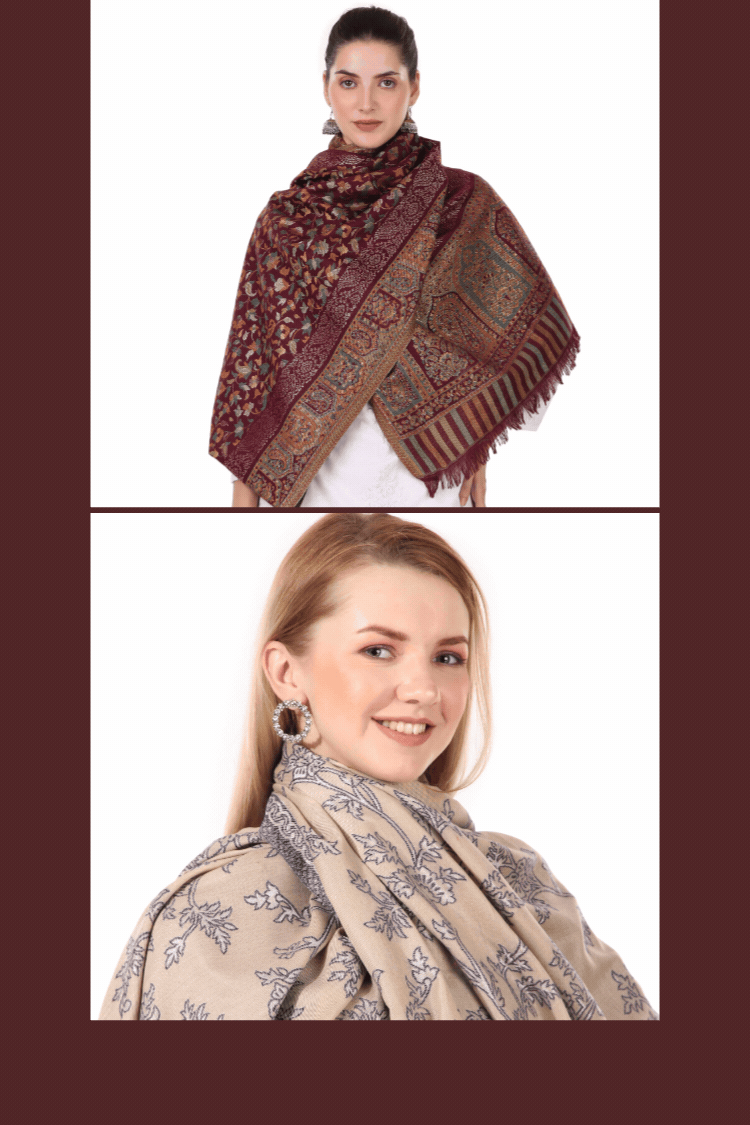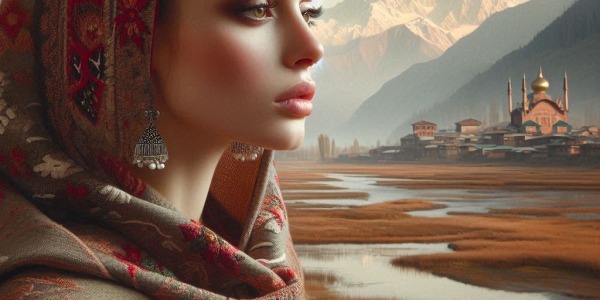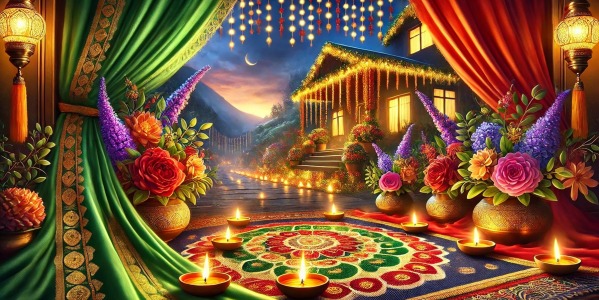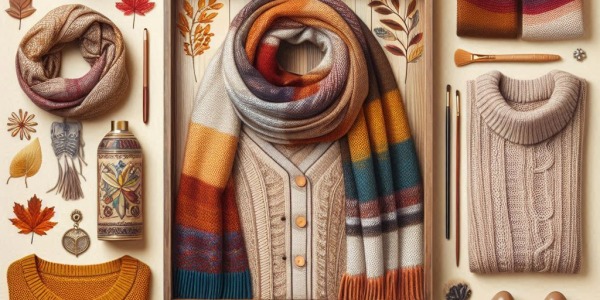- Style Guide
- 0 likes
- 79 views
Curious about the high price of pashmina shawls? This comprehensive article explores the reasons behind their expense, including craftsmanship, material quality, and rarity. Discover why pashmina shawls hold such value in the fashion world.

When it comes to luxurious fashion accessories, pashmina shawls have gained a reputation for their exquisite beauty and hefty price tags. These elegant garments, made from the fine wool of the Kashmiri pashmina goat, are treasured by fashion enthusiasts worldwide. But why exactly are pashmina shawls so expensive? In this article, we will delve into the various factors that contribute to their high cost, shedding light on the craftsmanship, material quality, rarity, and more. By the end, you will have a deeper understanding of why pashmina shawls hold such value in the fashion industry.
The Craftsmanship Behind Pashmina Shawls
Pashmina shawls are renowned for their exquisite craftsmanship, which sets them apart from other types of shawls. Skilled artisans dedicate hours of meticulous work to create these beautiful garments. From the initial sorting and hand-spinning of the pashmina wool to the delicate weaving and intricate embroidery, every step in the process requires precision and expertise. The attention to detail is evident in the fine stitches, intricate patterns, and flawless finishes. Each pashmina shawl is a labor of love, showcasing the dedication and craftsmanship of the artisans involved.
The Exceptional Quality of Pashmina Wool
One of the primary reasons for the high cost of pashmina shawls lies in the exceptional quality of the pashmina wool itself. Derived from the soft underbelly of the Kashmiri pashmina goat, this wool is incredibly fine and lightweight, yet remarkably warm. The unique properties of pashmina wool make it highly sought after in the fashion industry. It provides exceptional insulation while allowing the skin to breathe, making pashmina shawls comfortable to wear in various climates. The fine fibers also give the shawls their luxurious texture, ensuring a soft and smooth drape.
Rarity and Limited Availability
Pashmina shawls are considered luxurious and exclusive due to their rarity and limited availability. The Kashmiri pashmina goat, native to the Himalayan region, produces a limited amount of fine undercoat wool each year. The delicate and time-consuming process of harvesting and processing this wool further contributes to its scarcity. Additionally, the traditional weaving and embroidery techniques used in creating pashmina shawls are passed down through generations, making it a specialized craft. As a result, the number of authentic pashmina shawls produced annually remains limited, adding to their value and desirability.
Hand-Weaving Techniques Passed Down Through Generations
Pashmina shawls are often woven using traditional hand-weaving techniques that have been passed down through generations in Kashmiri communities. These techniques require immense skill, precision, and patience. Skilled artisans meticulously weave each thread by hand, ensuring that the patterns and designs come to life on the loom. The intricate hand-weaving process allows for greater attention to detail and results in beautifully crafted shawls that showcase the artistry and expertise of the weavers.
The Time-Intensive Nature of Pashmina Shawl Production
The production of pashmina shawls is a time-intensive process that contributes to their high cost. From the initial stages of sourcing and spinning the wool to the weaving, dyeing, and finishing, each step requires careful attention and time. It can take weeks or even months to complete a single pashmina shawl, depending on its complexity and level of craftsmanship. The dedication and effort put into creating these shawls are reflected in their intricate designs, impeccable quality, and luxurious appeal.
The Intricate Designs and Embroidery Work
Pashmina shawls are known for their intricate designs and exquisite embroidery work. Skilled artisans employ various techniques, such as kani weaving, jamawar, or aari embroidery, to create visually stunning patterns and motifs. These designs often draw inspiration from nature, Persian influences, or traditional Kashmiri art forms. The intricate embroidery is meticulously done by hand, adding an extra layer of beauty and detail to the shawls. The combination of skilled craftsmanship and intricate designs enhances the aesthetic appeal of pashmina shawls and contributes to their higher price point.
The Role of Kashmiri Textiles in Pashmina Shawls
Pashmina shawls are deeply rooted in the rich textile heritage of Kashmir. The region has a long-standing history of producing fine textiles and is renowned for its craftsmanship. The traditional knowledge and expertise passed down through generations contribute to the authenticity and quality of pashmina shawls. The combination of the finest pashmina wool, skilled craftsmanship, and the essence of Kashmiri textiles all converge to create shawls that are cherished and valued.
Pashmina Shawls as Investment Pieces
Investing in a pashmina shawl is not only a fashion choice but also an investment in a timeless and luxurious accessory. These shawls have a long-standing reputation for retaining their beauty and value over time. As unique pieces of art, pashmina shawls can appreciate in value, especially if they are well-maintained and cared for. Their rarity, quality, and enduring appeal make them highly sought after by collectors and fashion enthusiasts alike. Owning a pashmina shawl allows you to possess a piece of artistry and craftsmanship that can be cherished for generations to come.
FAQs: Why are Pashmina Shawls Expensive
Q1: Are pashmina shawls worth the high price?
A1: Yes, pashmina shawls are worth the high price due to their exceptional craftsmanship, luxurious materials, and limited availability. They offer timeless elegance and can be considered investment pieces.
Q2: What makes pashmina wool unique?
A2: Pashmina wool is derived from the soft underbelly of the Kashmiri pashmina goat. It is known for its fine texture, warmth, and lightweight feel, making it highly desirable for shawl production.
Q3: Can I find affordable alternatives to pashmina shawls?
A3: While true pashmina shawls may be expensive, there are lower-priced alternatives on the market. However, these may not possess the same level of craftsmanship, material quality, and authenticity as genuine pashmina shawls.
Conclusion: Why are Pashmina Shawls Expensive
In conclusion, the high price of pashmina shawls can be attributed to a combination of factors. The craftsmanship involved in their creation is meticulous and time-intensive, showcasing the skill and artistry of skilled artisans. The exceptional quality of pashmina wool, sourced from the Kashmiri pashmina goat, adds to their luxurious appeal. Additionally, the rarity and limited availability of pashmina shawls contribute to their exclusivity and desirability in the fashion world. When you invest in a pashmina shawl, you are not only acquiring a fashionable accessory but also a piece of art and culture. The enduring beauty and timeless elegance of these shawls make them a prized possession for those who appreciate fine craftsmanship and exceptional quality.

Elegant Pale Beige Jacquard Jamawar...
Harringbone Design Cashmere Fine Wool...
Dual Tone Reversible Self Jacquard 4...
Mauve Symphony Aari Embroidery Stole...
Whispering Ivory Aari Embroidery...
Black-Blue-Maroon Jacquard Paisley...
Dual Tone Reversible Self Jacquard 4...
Elegant Charcoal Black Aari...
Dual Tone Reversible Self Jacquard...
Handcrafted Swarovski Crystal Merino...
Kani Cutting Pattern Stole/Scarf -...
Chic Navy-Blue Jacquard Jamawar Zari...
Green-Maroon Jacquard Paisley Jamavar...

Denim & Drapes: Style Simplified
#Denim & Drapes: Style Simplified This blog post provides practical advice on how to enhance denim outfits using scarves, shawls, and stoles. It differentiates between these accessories and offers styling tips for casual and elegant looks, considering seasonal variations and various draping techniques. It emphasizes the versatility of denim as a backdrop for colorful and patterned accessories. The post also highlights the Pashmeen brand's collection of high-quality drapes and encourages readers to explore their range for stylish denim pairings.
Read more
Craftsmanship, Comfort, and Elegance: Discover the Warmth of Indian Kashmiri Crochet Embroidered Scarves
Explore the timeless beauty of Indian Kashmiri wool scarves adorned with intricate crochet hook embroidery. Learn about their history, craftsmanship, and how to style these exquisite pieces.
Read more
Diwali 2024 Fashion Trends with Pashmeen: Elevate Your Festive Look
Celebrate Diwali with Pashmeen: Elevate Your Festive Fashion As Diwali approaches, it's the perfect time to refresh your wardrobe with elegant accessories from Pashmeen. Our collection of luxurious scarves, stoles, and shawls will enhance your festive looks, combining traditional craftsmanship with modern design. Key Trends: Vibrant Colors: Embrace rich jewel tones like emerald green and ruby red for a festive touch. Statement Accessories: Oversized scarves with intricate designs can elevate any outfit, from sarees to lehengas. Sustainable Choices: Opt for ethically sourced pashmina to enjoy luxury while being environmentally conscious. Mix and Match Styles: Pair traditional attire with modern pieces for a unique look. Comfort Meets Style: Lightweight stoles are perfect for long celebrations while keeping you stylish. Explore our exclusive Diwali collection and find the perfect accessory to make this festive season unforgettable!
Read more
Embrace Elegance with Our Kashmiri Aari Hand Embroidered Pashmina Scarves
Discover the elegance of Kashmiri Aari hand embroidered Pashmina scarves at Pashmeen. Our scarves blend the luxurious feel of Pashmina with the intricate beauty of traditional Kashmiri embroidery, making them perfect for any occasion. Whether you’re dressing up for an event or staying warm in the mountains, our scarves offer both style and comfort. Explore our collection today and experience the timeless charm of handcrafted artistry.
Read more
Cashmere Pashmina: The Ultimate Luxury Scarfs, Shawls, Stoles, and Mufflers
The article discusses cashmere pashmina, a pricey textile manufactured from the silky undercoat of the Cashmere goat. The several kinds of cashmere pashmina accessories—including scarves, shawls, stoles, and mufflers—and how they may warm up and dress up any outfit are covered in the article. Also, it includes maintenance advice for your cashmere pashmina accessories, such as hand washing in cold water, air drying, and storage in a cool, dry area.
Read more































